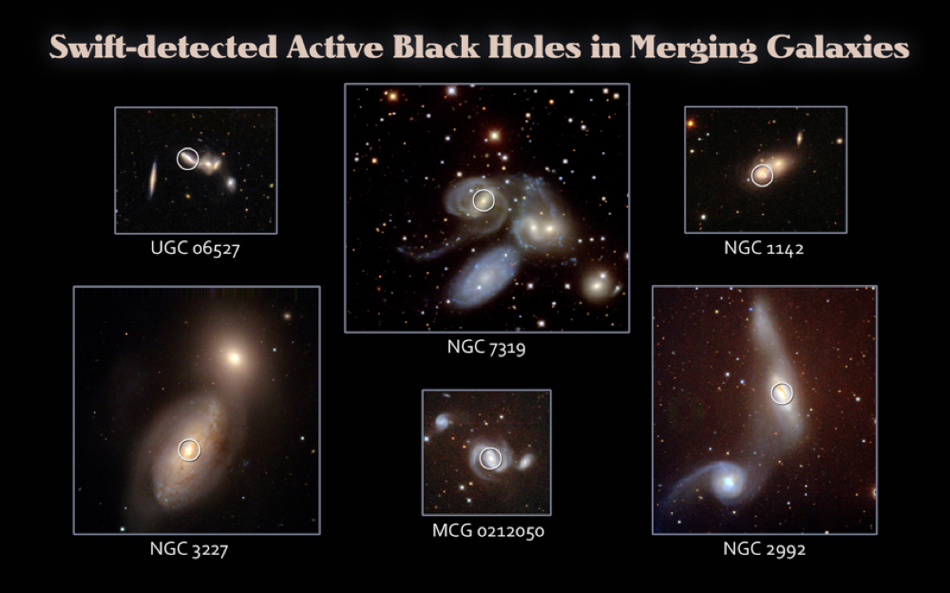
 Credit: NASA/Swift/NOAO/Michael Koss and Richard Mushotzky (Univ. of Maryland)
Credit: NASA/Swift/NOAO/Michael Koss and Richard Mushotzky (Univ. of Maryland)
Turned on By the Bump
As things go, galaxies are rather gregarious. If our sun was shrunk to the size of a basketball in Washington DC, the next nearest star would be a located near Los Angeles. But if a galaxy were basketball sized, the next nearest galaxy, on average, would be a basketball located only a few meters away. And the way galaxies fly around there's a good chance they'll collide. That sounds bad to a dweller on a planet orbiting a star in one of the colliding galaxies, but don't worry - the chances that two stars will collide are infinitesimal. But galactic collisions do have rather dramatic impact: they can severely distort the distributions of gas and dust (and dark matter?). And now, thanks to the Swift Gamma-ray space observatory, we know that that galaxy collisions play a particularly important role in feeding their inner supermassive black hole. A recent high-energy survey by Swift has provided the clearest view of these supermassive black holes yet obtained. This survey shows that the brightest supermassive black holes tend to be found in colliding galaxies. Despite being so bright, many of these supermassive black holes are so covered by gas and dust that most of their visible radiation never reaches the earth. But the high energy radiation that Swift can detect passes right through this material. The image above shows a small selection of hard bright supermassive black holes detected by Swift's Burst Alert Telescope (which likes to keep busy when not hunting Gamma-ray bursts). All are clearly within colliding galaxies. These observations help confirm the long-suspected theory that nuclear activity in many galaxies is driven by galactic interactions. Maybe our own Milky Way nucleus is only awaiting the touch of a nearby galaxy to turn on. If so it won't have too long to wait - only a few billion years.
Published: May 31, 2010
<
HEA Dictionary ● Archive
● Search HEAPOW
● Other Languages
● HEAPOW on Facebook
● Download all Images
● Education ● HEAD
>

Each week the HEASARC
brings you new, exciting and beautiful images from X-ray and Gamma ray
astronomy. Check back each week and be sure to check out the HEAPOW archive!
Page Author: Dr. Michael F. Corcoran
Last modified Monday, 26-Feb-2024 17:09:44 EST


